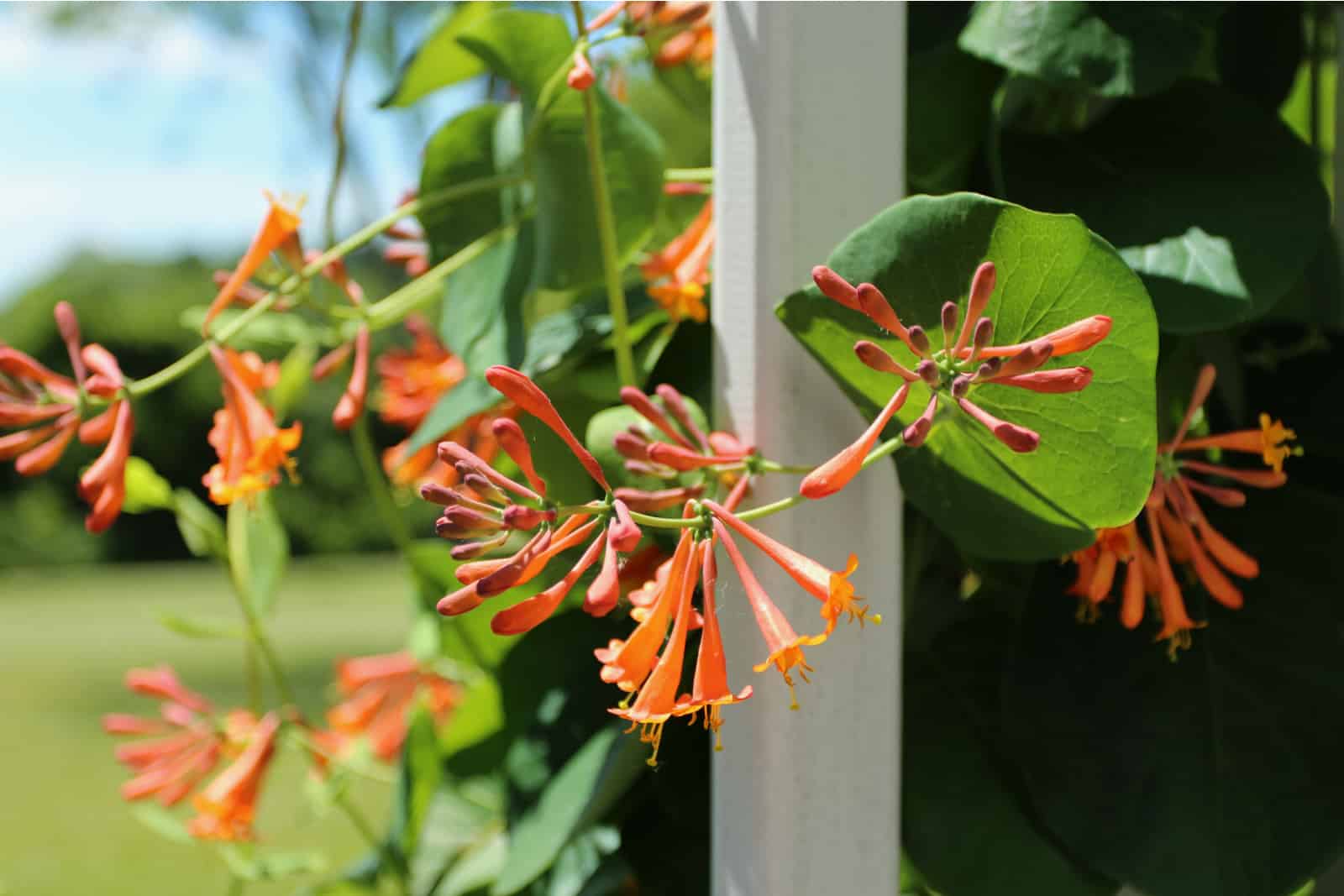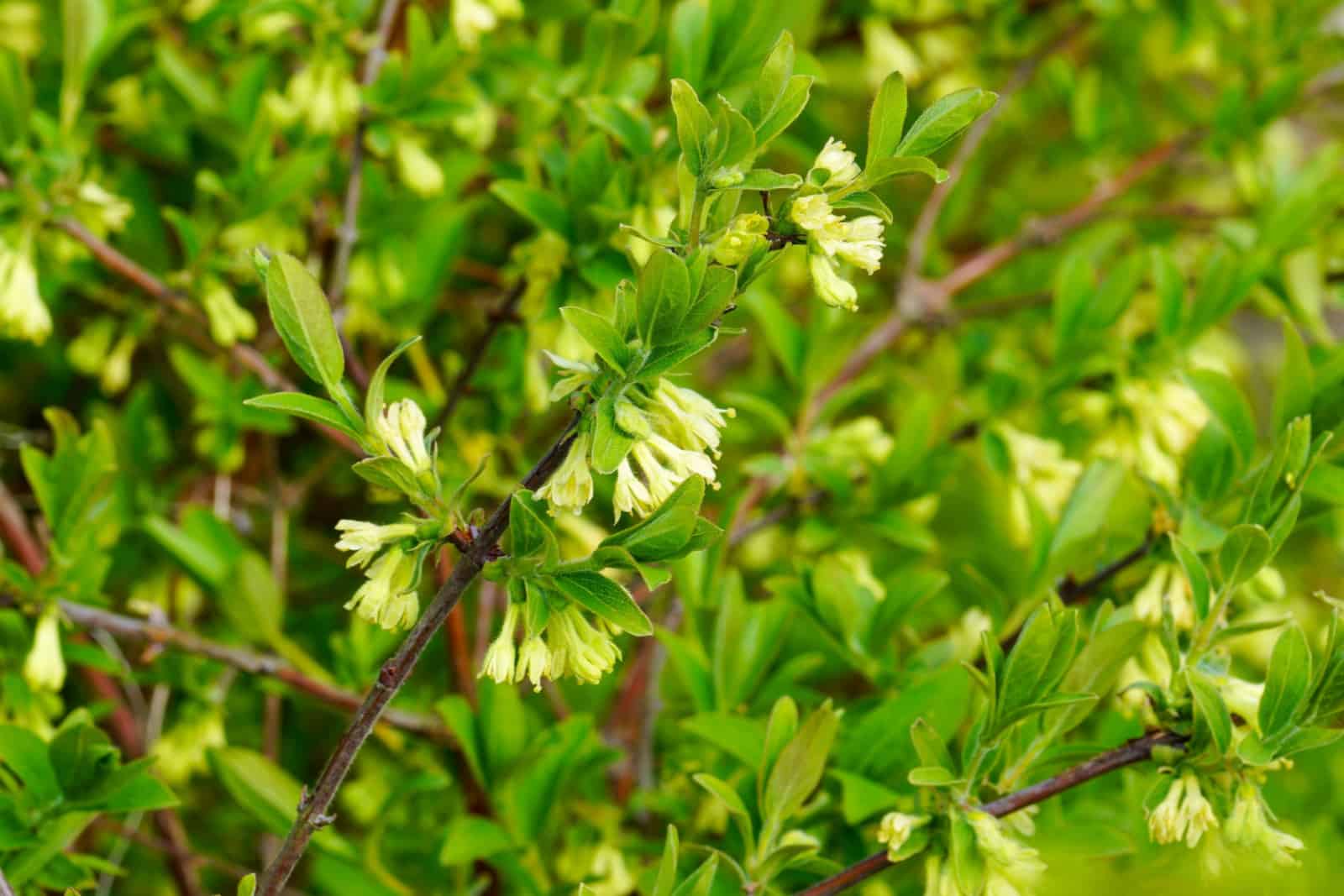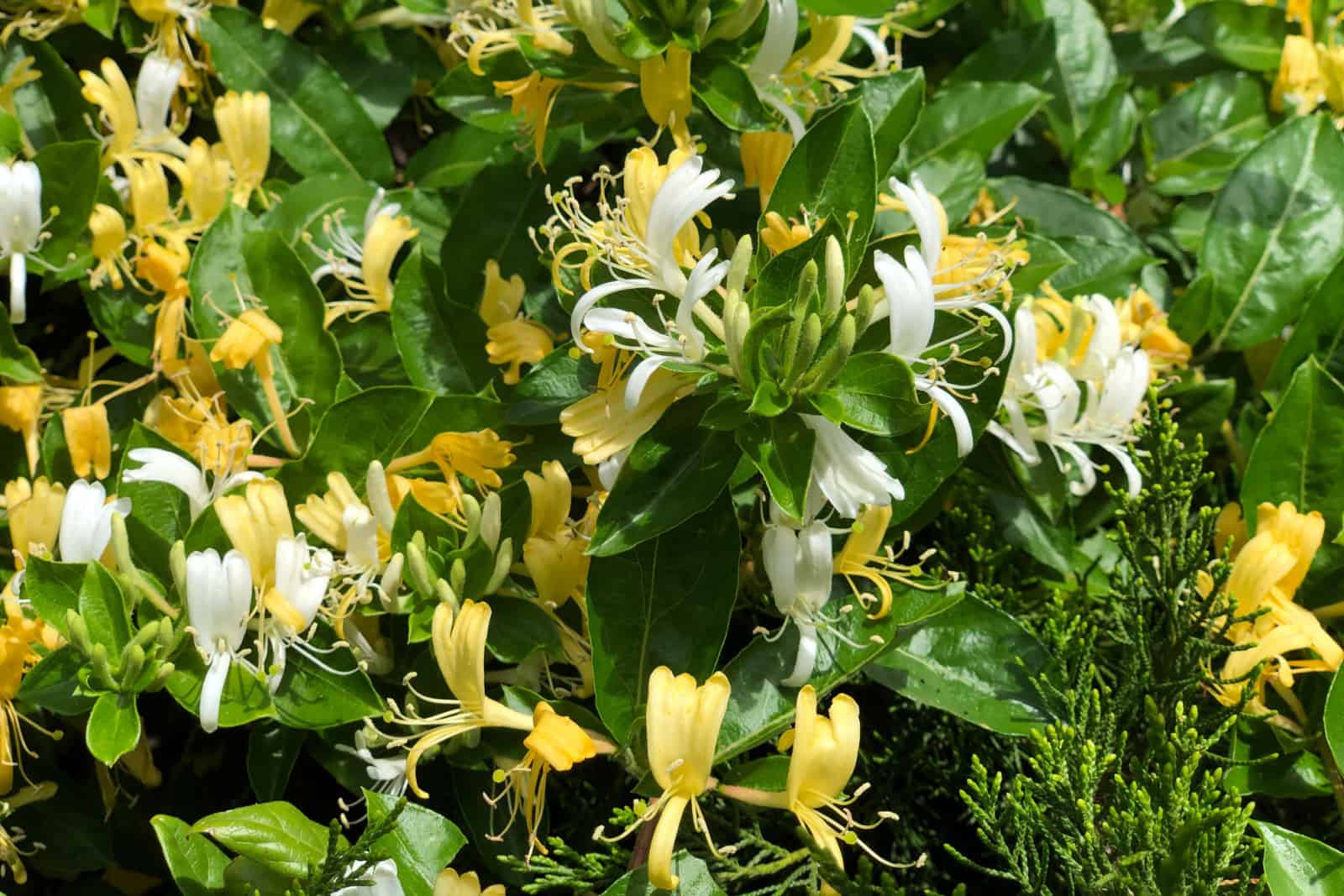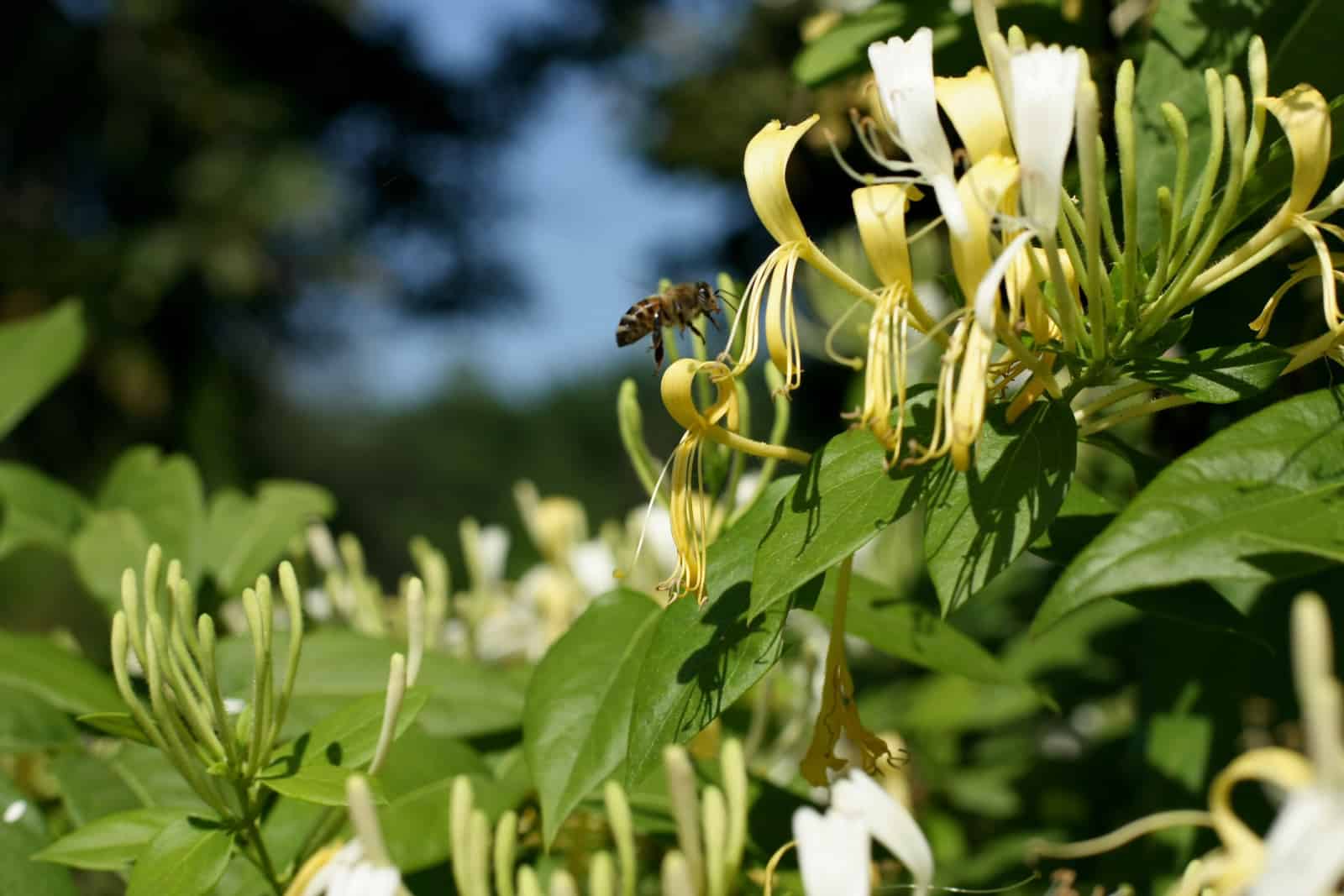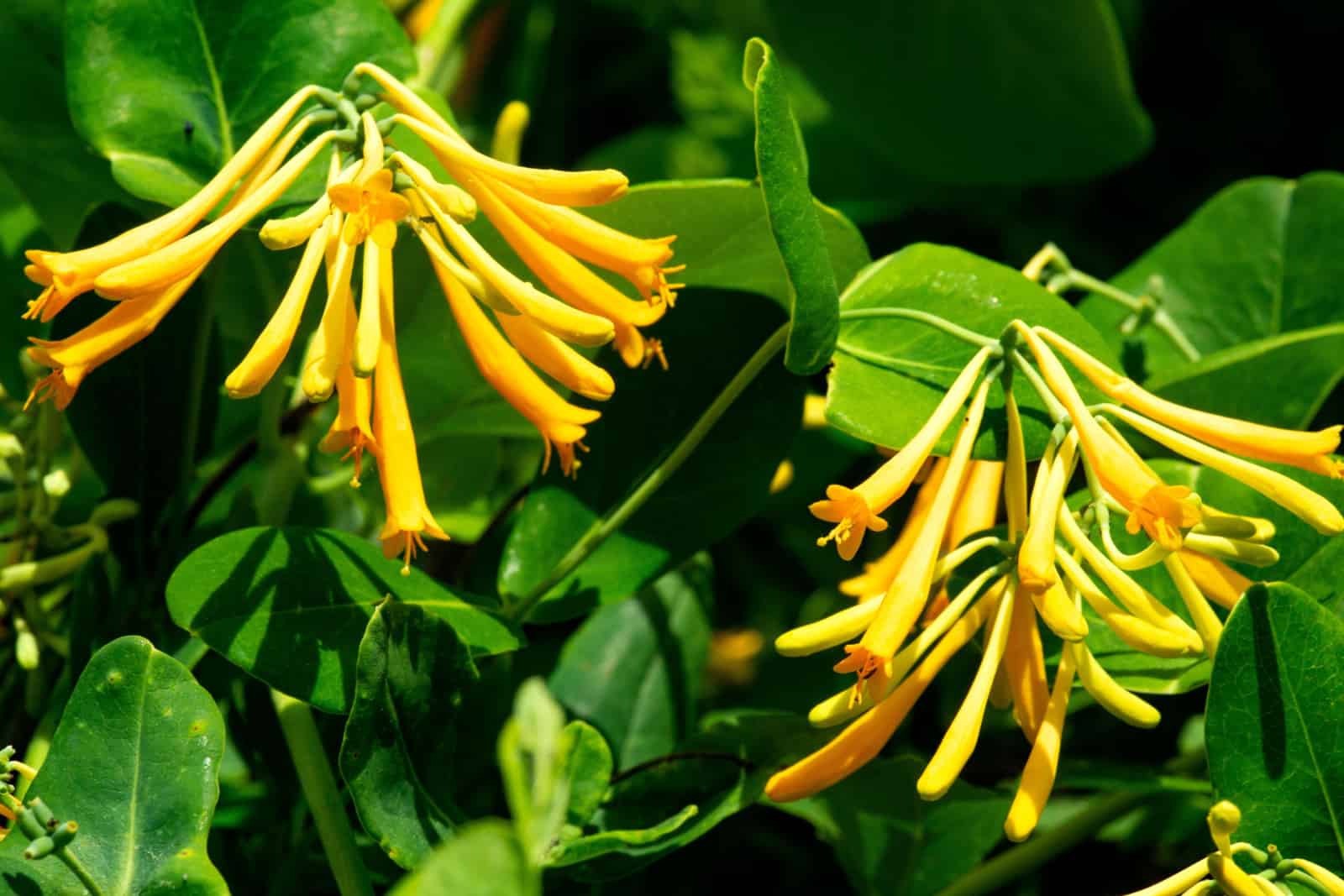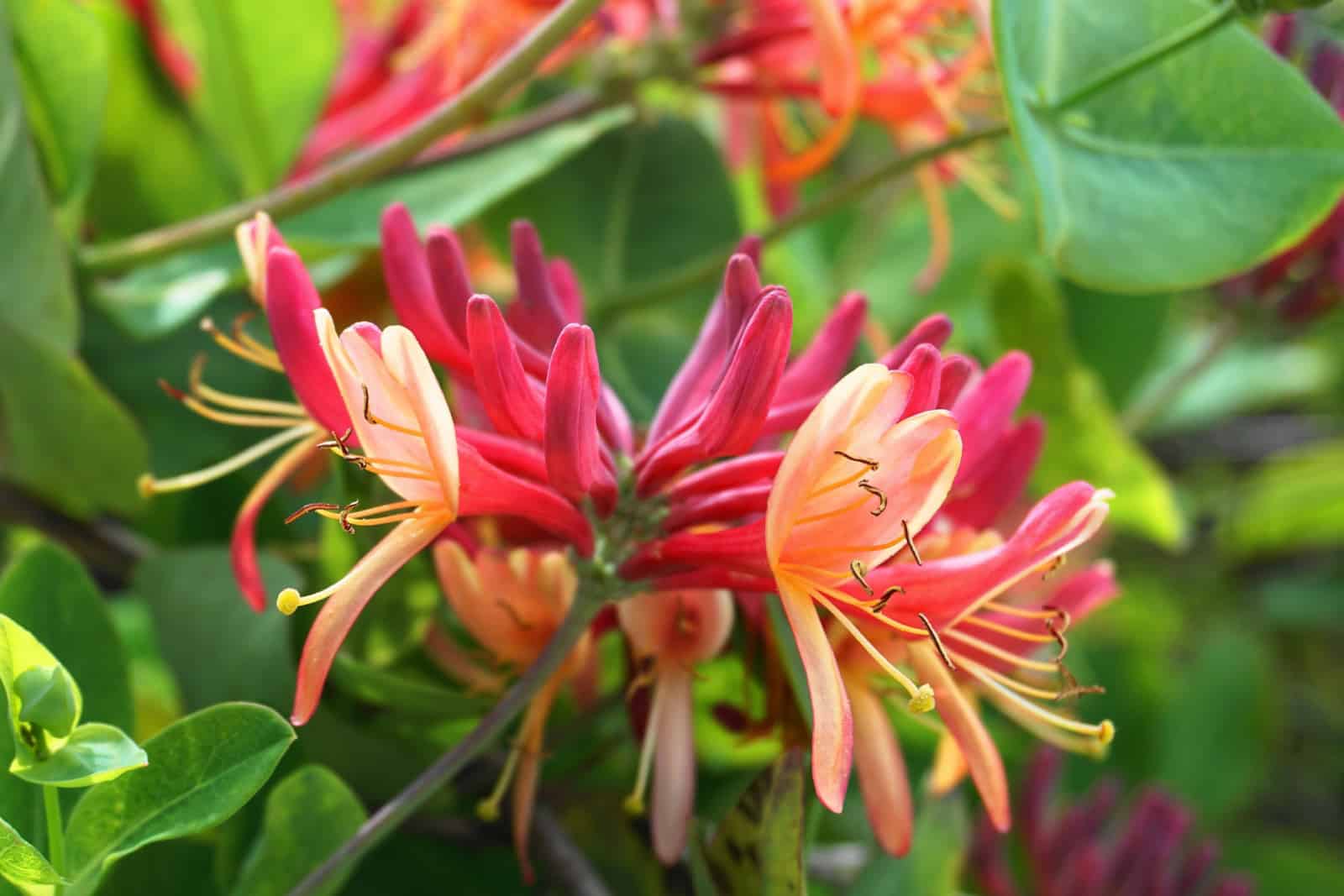If you want to add a special touch of beauty to your garden, I have the perfect plants for you! Climbing honeysuckle types will make an excellent addition to any design you have in mind.
Their cascading, fragrant blossoms look spectacular in containers and flower beds, and can be used as focal points in landscapes.
If you decide on growing climbing honeysuckle vines, here’s everything you need to know!
Reasons To Grow Climbing Honeysuckle Vines
Before I show you the growing and care guides for these plants, you should know why adding honeysuckle to your garden is a great idea.
This is one of the most popular shrubs and gardeners love it because of its low care requirements. Honeysuckle is a beginner-friendly plant and its hardiness makes it suitable for cultivation in different USDA zones.
You can enjoy its sweet-scented, vibrant blossoms with just a little care. This is a plant that hummingbirds and butterflies adore, which is a great reason to add it to your garden.
If you ensure structural support, you can grow climbing honeysuckle against a wall or fence, and some gardeners grow these varieties as ground covers.
Depending on the variety, the vines of climbing honeysuckle can extend from 12 to 30 feet.
The blossoms combine perfectly with glossy green foliage, which can be evergreen or semi-evergreen.
Let’s take a closer look at these honeysuckle types.
How Fast Does Honeysuckle Grow?
Honeysuckle develop into pretty large plants but they need approximately 5-10 years to reach maturity.
It may seem like too long but it’s not if we compare this growth rate with that of other common plants.
The growth rate depends on the individual honeysuckle variety and growing conditions you ensure.
Honeysuckle And Bees
It’s not surprising that bees adore these plants. I guess the name says it all!
Their fragrant blossoms are rich in nectar and will attract both bees and birds. As well as the nectar, bees and birds will use the vines as shelter and food.
A Complete Growing Guide
This plant species doesn’t need much to thrive but you must meet its basic requirements regarding pruning, soil type, and light. You should also know what can grow wrong, i.e., which pests or diseases can occur in your honeysuckle.
Let’s learn more!
How To Prune Honeysuckle
A great piece of news for beginner gardeners is that you don’t have to prune vining honeysuckle varieties often unless you have a specific shape in mind.
If you want to encourage new growth, prune weaker vines with a sharp and sterilized pair of scissors.
You can basically prune at any time of year, except if you want to remove a bigger portion of your honeysuckle.
These plants enter dormancy in the fall, so I recommend heavy pruning during that period.
Pruning is one of the main reasons why growers decide on climbing honeysuckle plants. Bush varieties need more pruning to maintain their compact shape and you need to prune them in spring.
Best Soil
Honeysuckle is an adaptable plant that can thrive in different soil types. However, it will perform best in free-draining and nutrient-rich soils full of organic matter.
Keeping the soil constantly moist is preferable but make sure not to overwater it. Overly wet soil will cause the honeysuckle roots to rot, which can result in plant death.
These plants thrive in acidic to slightly alkaline soil types, so pH can range from 5.0 to 8.0.
Since honeysuckle likes rich soils, you can boost the nutrient levels by applying a balanced triple 10 fertilizer.
I recommend fertilizing your honeysuckle in spring when it starts displaying new growth.
Honeysuckle Light Requirements
The majority of honeysuckle varieties perform best in full sun. It can grow in partial shade but growth can be affected.
Full sun will encourage your honeysuckle to generate more lovely blossoms.
Honeysuckle is hardy in USDA zones 5 through 9. These plants can take longer to fully establish, but once they do, they become vigorous growers and prolific bloomers.
Some varieties, such as trumpet honeysuckles, are native to North America and will perform best in these USDA zones. We’ll learn more about different varieties later.
Pests And Diseases
Even though climbing honeysuckle isn’t a sensitive plant, some pests and diseases can affect it.
You should pay especially close attention to aphids because they seem to love munching on honeysuckle vines.
If your honeysuckle isn’t heavily infested, you can spray the aphids off.
However, if the infestation is severe, you’ll need to include other pest control methods such as using insecticidal soap or neem oil solutions.
Honeysuckle isn’t susceptible to infections, but it isn’t entirely disease-free. The most common disease is powdery mildew, and the signs your honeysuckle is suffering from it include white powdery spots on the vines.
One of the most frequent causes of this disease in honeysuckle is poor air circulation between plants, which occurs as a consequence of overcrowding.
You can avoid powdery mildew by ensuring enough space between each plant and pruning if needed.
Varieties To Select
Here are the 6 most popular and widely available climbing honeysuckle varieties.
1. Lonicera sempervirens: This is a US-native plant commonly known as trumpet honeysuckle or coral honeysuckle. It generates red blossoms with yellow centers.
2. Lonicera x heckrottii ‘American Beauty’: It’s also referred to as Goldflame and produces fragrant, pink blossoms with orange throats that are 2 inches long. This variety will grow well in sunny and shady locations.
3. Lonicera brownii Dropmore Scarlet: This is a perfect climbing plant for fences. It can reach 12 feet and generates orange-scarlet blossoms with orange throats. It prefers partial shade.
4. Lonicera periclymenum: This variety is native to Southeastern Asia and Europe and there are 2 main cultivars: Belgica with pinkish-red blossoms, and Serotina aka Dutch honeysuckle, with purplish-red and white blossoms. Both cultivars typically don’t exceed 12 feet.
5. Lonicera hildebrandiana: Also known as Burmese, the spectacular hildebrandiana variety is native to China. This is the largest cultivar and vines can exceed 30 feet. It produces large yellow blossoms around 6 inches long.
6. Lonicera aureoreticulata: If you need an idea for ground cover, the aureoreticulata variety is perfect. It produces tiny scented white blossoms and can extend to 15 feet.
Which Variety Is The Most Fragrant?
Lonicera x peryclimenum aka woodbine honeysuckle is a trailing type renowned for its fragrance.
L. fragrantissima is often referred to as the Sweetest honeysuckle and is the most fragrant bushy honeysuckle type. Due to their enchanting scent, these varieties are perfect for pollinator gardens.
What Can You Grow Instead Of Honeysuckle?
Some honeysuckle varieties, such as Japanese honeysuckle and Amur honeysuckle, are invasive (1). If you can’t find native noninvasive species, you should consider growing alternatives.
I recommend wisteria, jasmine, rose climbing species, and clematis.
Final Thoughts
If you want to transform an ordinary space into an extraordinary haven, choosing a climbing honeysuckle vine is the way to go. Take good care of them and they will reward you with captivating fragrant blossoms each season!
Until next time.
References
1. NEW YORK INVASIVE SPECIES. Honeysuckle Spp. https://nyis.info/invasive_species/honeysuckle/

